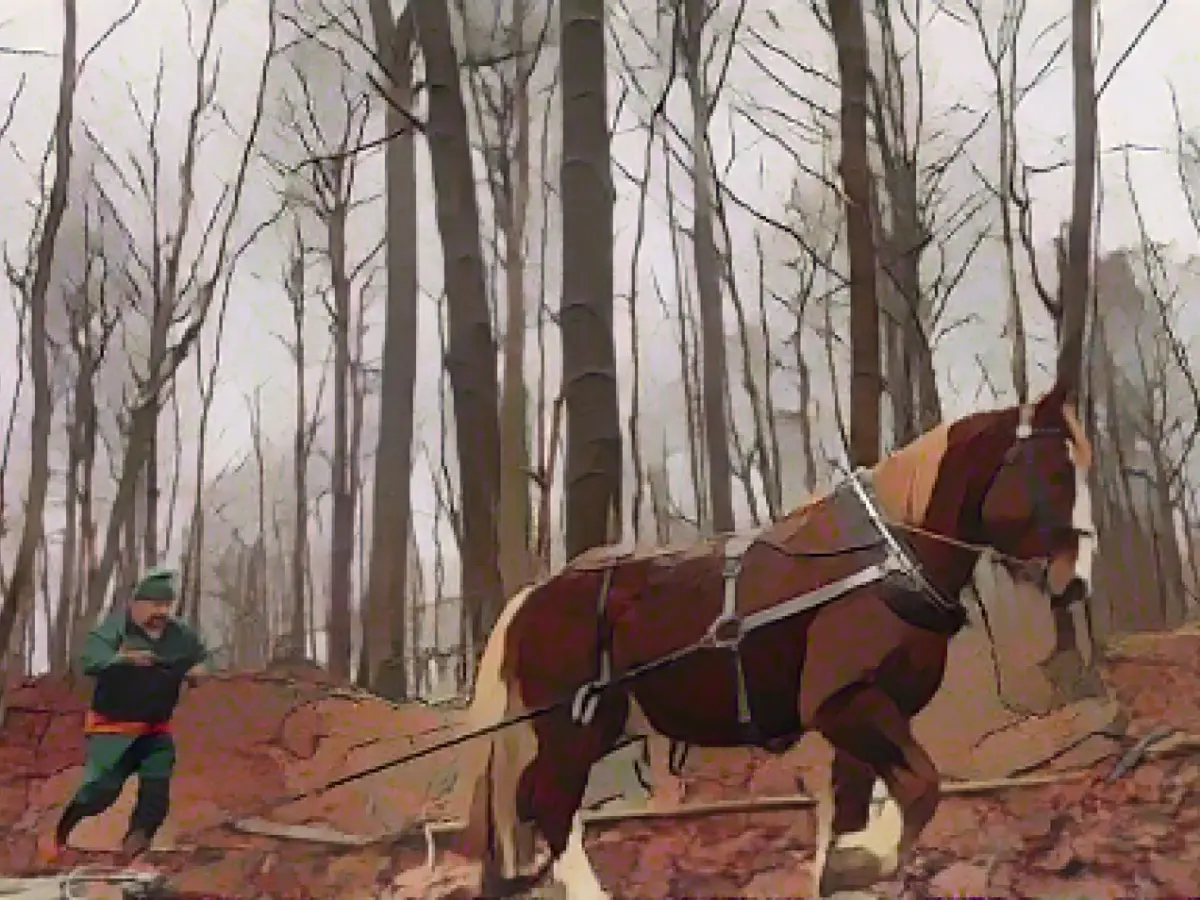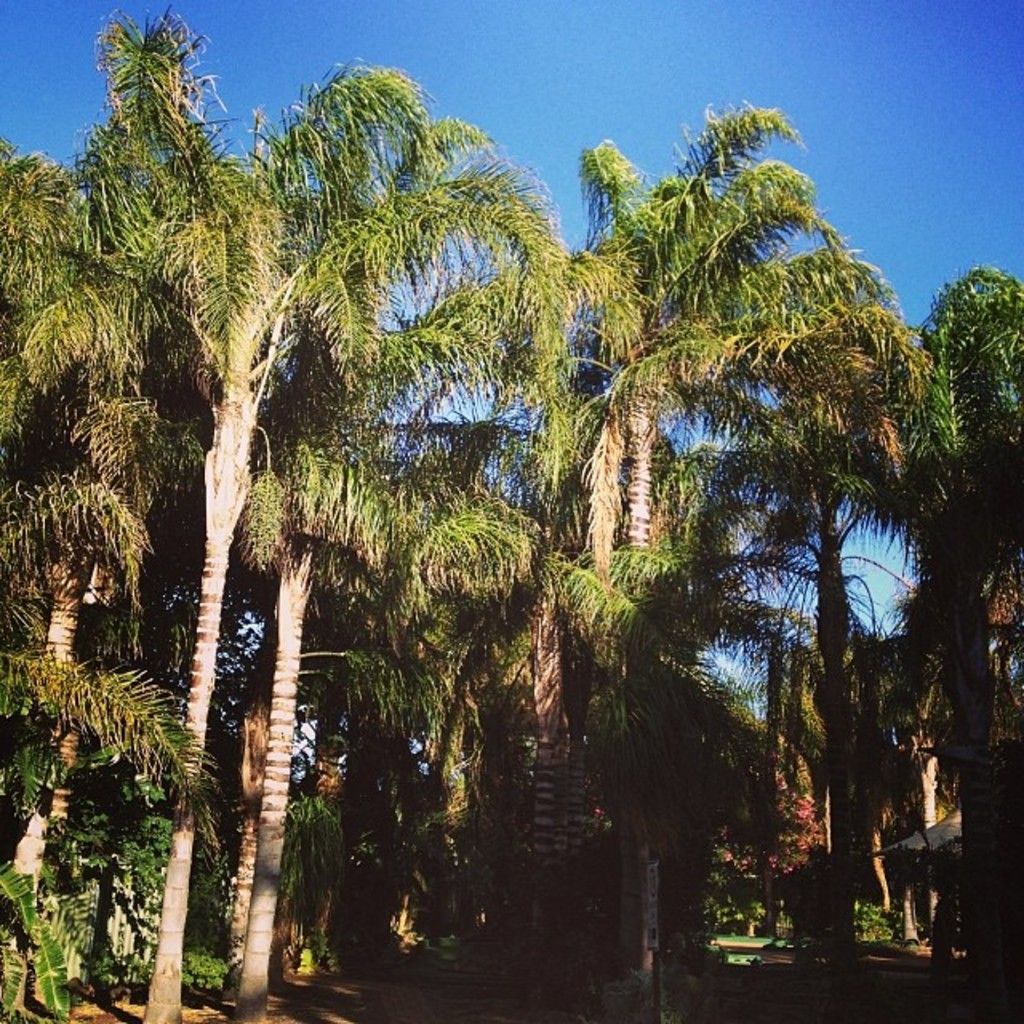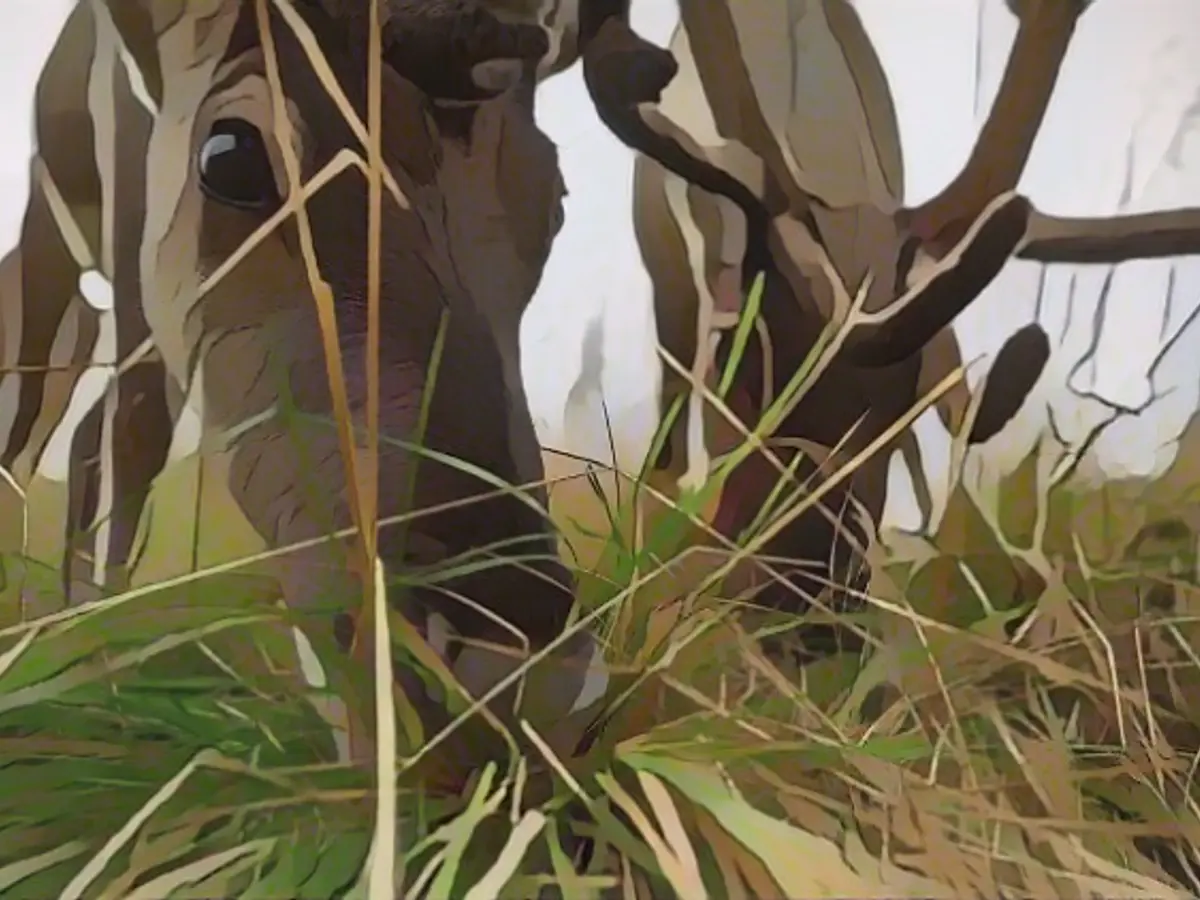In the district of Rendsburg-Eckernförde, you'll find Arne Brahmstedt and his horse Nemo hard at work. They're stationed at Gut Knoop's forest, notorious for its burial forest concept. This innovative approach to forestry, focusing on biodiversity and forest floor preservation, employs traditional methods like horse-logging.
Brahmstedt and Nemo carry three-meter-long tree trunks to the dirt road for further transport, even during their nine o'clock to three o'clock workdays. Here, the old-school horsepower takes center stage as machines are shunned. This unusual forest setup, dedicated to biodiversity, sees these traditional methods come into play.
Forester Sven Bielfeldt clarifies that the resting forest at Knoop Estate isn't your typical forest — it serves as an alternative to conventional forestry, with no sales of timber to forestry companies. With lush biodiversity, it makes sense to rely on horses for management in these protected areas.
Horse logging is a time-honored method used to protect forest ecosystems and preserve biodiversity. Traditionally, horses have been instrumental in selectively harvesting trees, reducing impact on the forest floor, and preserving ancient trees.
The gentle nature of horse logging allows for minimal soil compaction, promoting regeneration, and maintaining forest health. Moreover, horses can assist in ecological restoration by removing invasive species or deadwood, paving the way for natural regeneration.
In a nutshell, the use of horses in forest management at Gut Knoop significantly contributes to forest conservation and ecosystem health, supporting sustainable forestry practices. This eco-friendly approach preserves biodiversity and upholds the long-term health and balance of our forests.






